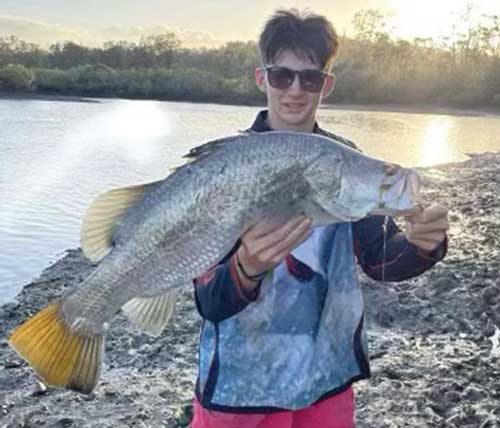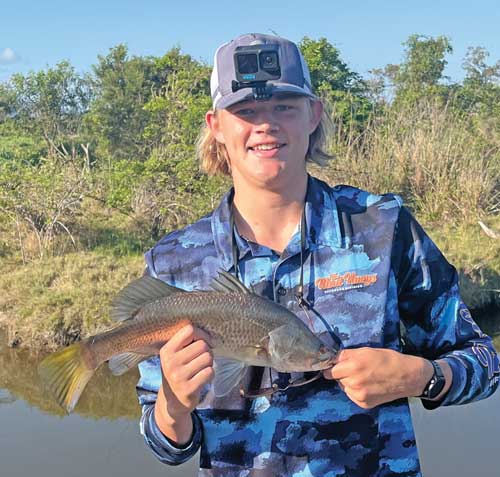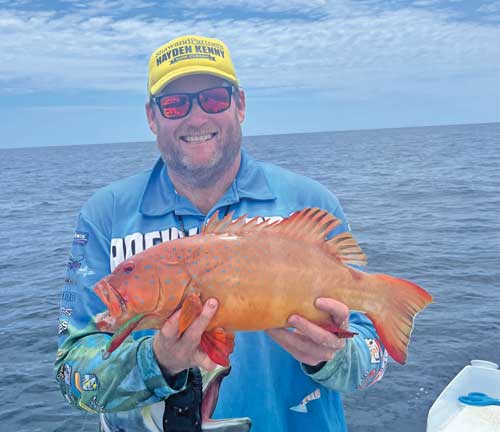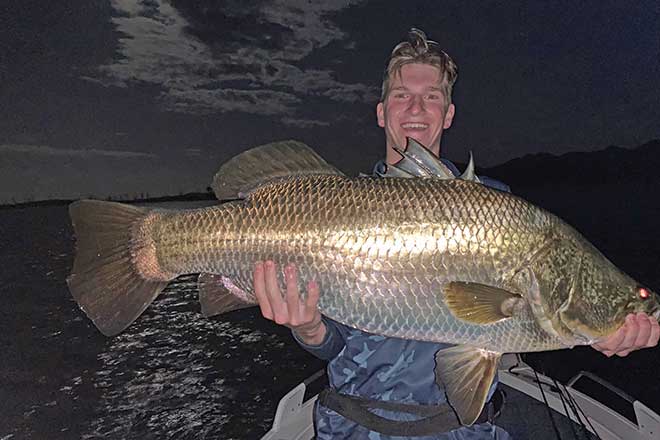February has finally arrived, which means the barramundi closure is over and it’s time to chase a few chrome fish.
Before hitting the water to target them, you need to do a couple of checks on your gear to ensure it’s up to the task.
Checks your reels to ensure your drag is smooth and your line is in good condition.
Make sure rod seats and guides are okay and there are no nicks in your eyelets.
Look at all your terminal tackle, ensure hooks, jig heads and trebles are sharp and strong, and swivels and split rings are in good condition.
Check you have enough leaders of various sizes to cover different structure types, water quality and the fish size you find.
By doing this, when you hook a decent barramundi, you’re giving yourself the best chance to land the fish as unfortunately, bigger barra have the skill of finding any weakness in your gear.
Gladstone holds a good population of this species through its many rivers, creeks and the harbour into the narrows.
Before the closed season, the Calliope River held good numbers of barramundi throughout the whole river.
I sounded the river from the rock wall at the mouth to the rocks at the highway bridge and found barra not only sitting on structure but happily holding in deeper water with no structure close by.

Though these fish were extremely hard to get a bite out of.
I tried every lure I could think of – as well as live bait – in an attempt to get a fish.
On speaking with others, they found the fishing the same, however had some success using prawn-style plastics with a very slow retrieve and plenty of casts.
When chasing other species, I’ve come across plenty of barramundi in the river, from one or two fish to schools of five to 15.
The Boyne River is a reliable producer of this species, with the upper section the most consistent option.
All the smaller creeks, through the narrows and at the top of Curtis Island, will hold a small population of barra too.
And Gladstone Harbour through to the start of The Narrows at Grahams Creek is another good option, with a wide variety of structure options.

Most commonly, the deeper rocky drop-offs give this fish a good place to sit out of the current and ambush bait as it’s washed over them.
They will also move up onto the shallower rock bars and drains as the tide rises to feed on the bait as it moves from deeper water to shallower and mangrove edges.
I won’t touch too much on lure types and techniques because most will work at some stage.
My tip is to be patient and offer multiple styles of lure to the fish before moving on to another school or spot.
The same goes when bait fishing – try to collect a couple of bait types as, while a mullet might get no interest, a live prawn could get an instant reaction.
Fishing for barramundi can be frustrating – they are easily seen on a sounder but will often show no interest in what you offer.
On the other hand, when they do decide to play the game and bite, it can soon turn into mayhem with multiple fish coming quickly.
If you’re chasing location, the Fitzroy River region through to Port Alma and the top of The Narrows also holds both awesome numbers and sizes of barramundi.
Freshwater lakes and dams such as Awoonga, Monduran and Callide will all be firing for good-sized fish.

Some decent by-catch can be taken when chasing barra on bait and lure, with fingermark, mangrove jack, grunter and both blue and threadfin salmon all options.
Fishing out wider on the reefs has been extremely weather dependent, but when there were gaps, good numbers of coral trout and redthroat emperor were on offer.
I’ve found quantities of coral trout near the front of Facing Island and the mouth of the harbour around North Entrance.
While you can’t expect to catch big numbers of large fish, you can see fish to about 50cm occasionally.
Grass sweetlip have also been a common find and are a welcome addition to the Esky.
Fingermark are coming from the deeper rock section in the river and through the harbour on live bait and lures.
Whiting are being caught off Lilley’s Beach and around the sandbanks in the harbour on yabbies and fresh prawn bait.
With the hot weather and storms, mangrove jack will still be chewing hard and fishing tight to structure will soon see you connected to some of these brutes.
Mud crabs will be moving about a little more and, with the rain we had in early January, prawns will also be available for bait, or a feed if you can find some larger ones.
Now is the time to get on the water and chase a few barra, before the weather starts to cool in early April.
Cheers and happy fishing from Gladstone.
 Bush ‘n Beach Fishing Magazine Location reports & tips for fishing, boating, camping, kayaking, 4WDing in Queensland and Northern NSW
Bush ‘n Beach Fishing Magazine Location reports & tips for fishing, boating, camping, kayaking, 4WDing in Queensland and Northern NSW









